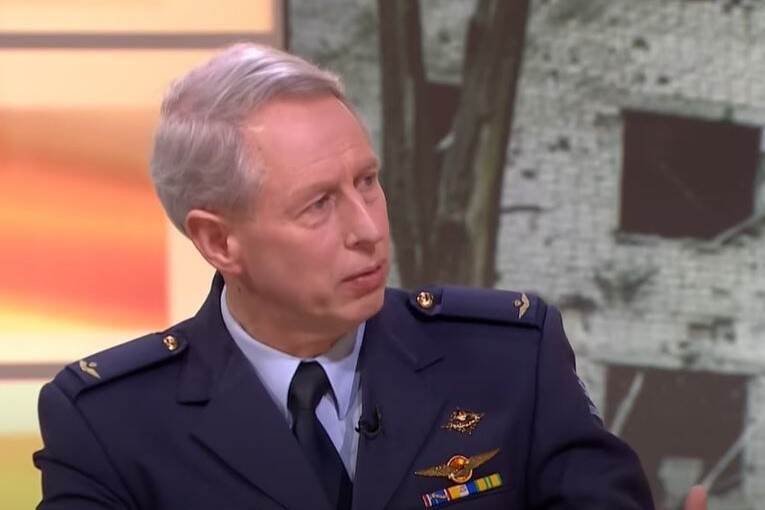Professor of War Studies Osinga: ‘Russia is deviating from its own doctrine in Ukraine’
The war in Ukraine is being fought in a way that no one had expected. Why is Russia making so little progress despite its numerical superiority? And what exactly are the differences between the types of warfare? Air Commodore Frans Osinga, Professor of War Studies, spoke with Defensie

Standard approach: first gain air superiority
“In 1991 in Operation Desert Storm, the United States set the standard in terms of how Western armed forces operated in the years that followed. It started with a prolonged air campaign to gain air superiority. That superiority was then used to attack or destroy enemy ground forces before they could come into contact with friendly forces. It therefore became possible to accelerate the operations of friendly forces and reduce the risk of casualties. Precision-guided munitions in particular made this possible. Such munitions also made the West much more capable of reducing the risk of collateral damage and civilian casualties.”
Combination of land and air operations proved effective
“That method has since been used in UN peacekeeping missions, for example, and was also used in Afghanistan following the 9/11 attacks. Conventional means are still used, but mainly from the air. The US could not put many boots on the ground in Afghanistan either, but it made clever use of special units that operated with local, irregular troops of the Northern Alliance. The combination of land and air operations proved to be very effective. Relative to historical campaigns, the number of casualties among friendly forces was exceptionally low.”
Russia did not continue the war from the air
“Russia’s tactics differed fundamentally. Russian forces did not establish undisputed air superiority first. Although they attempted to do so, they did not follow through. They were unable to defeat the Ukrainian air force. As a result, neither country is dominant in the air. Because of that, Russian forces cannot freely manoeuvre on the ground.
“In addition, Russia has not been able to establish proper cooperation between its air and ground forces. The ground forces are therefore vulnerable to anti-tank weapons, drones and artillery fire. There is little coordination between the tanks, other armoured units and the infantry. It is strange that Russia is taking this approach, because its doctrine suggests that there should be coordination. It refers to the close coordination of land operations and air operations.”
Conventional warfare
In terms of the ways and means being used, the war in Ukraine is reminiscent of the Second World War. Experts had not expected that a conventional war would be fought in Europe this century. Osinga explained the differences between the types of warfare.
“Conventional warfare now has many facets. Originally, it meant the use of traditional military means in contrast to nuclear warfare, for example, which includes threatening to use nuclear weapons without actually deploying them.”
Irregular warfare
“Irregular warfare is the kind of warfare conducted by guerrilla fighters or terrorist organisations. While such fighters use conventional weapons, their tactics are completely different. They lay ambushes and booby traps, or carry out suicide attacks, for example. The categories sometimes overlap. In large-scale wars, there are sometimes areas in which guerrilla fighters are active.”
Hybrid warfare
“Hybrid warfare combines different forms of action. An example of this is Hezbollah in 2006. This originally terrorist organisation carried out rocket and terrorist attacks against Israel, but it also used conventional methods to defend villages and cities.
“Russia introduced a new version in 2016, one that involves influencing through cyber attacks, social media, fake news, propaganda and the dissemination of disinformation. Although it is not armed force in that it does not kill you, it does have a strategic effect. This is a key reason why NATO is calling for the modernisation of its capabilities in this area.”
Stalemate
A disinformation campaign is also being waged as part of the invasion of Ukraine, but it seems to be having an effect mainly in Russia itself. In Ukraine, Russia has not been able to translate its numerical superiority in troops and materiel into dominance. In effect, there is a kind of stalemate at present. According to Osinga, this may be because Russia underestimated Ukraine and overestimated its own capabilities.
Clever defence by Ukraine
“In addition, the Ukrainians have set up a very clever defence, one that takes advantage of the weaknesses of the Russian strategy. They know that they are numerically inferior to the Russians, but the Russian advantage is lost in cities. In the open field, you need three attackers to one defender to be able to dominate, whereas in cities you need 6 attackers to 1 defender. The mobility and speed of tanks and armoured vehicles cannot be brought to bear in cities. Moreover, they can be fired upon from all sides, which makes the urban environment extremely dangerous for their crews.
“By contrast, the Ukrainians are making good use of their own freedom of movement. They can target the logistics convoys of the Russians. These convoys are forced to remain on roads because the Russians are reluctant to travel over the soft, thawing ground. The Ukrainians can therefore use hit and run tactics. The Russian numerical superiority of 150,000 to 190,000 against 100,000 Ukrainians is therefore inadequate.”
Possibilities
“To really continue the attack, Putin needs a substantially higher number of troops. As long as the West supplies weapons to Ukraine and it has enough fighters, it will hold out, unless the humanitarian suffering becomes too great for Zelensky. However, Putin will not stop until he salvages something that he can sell as a victory.”